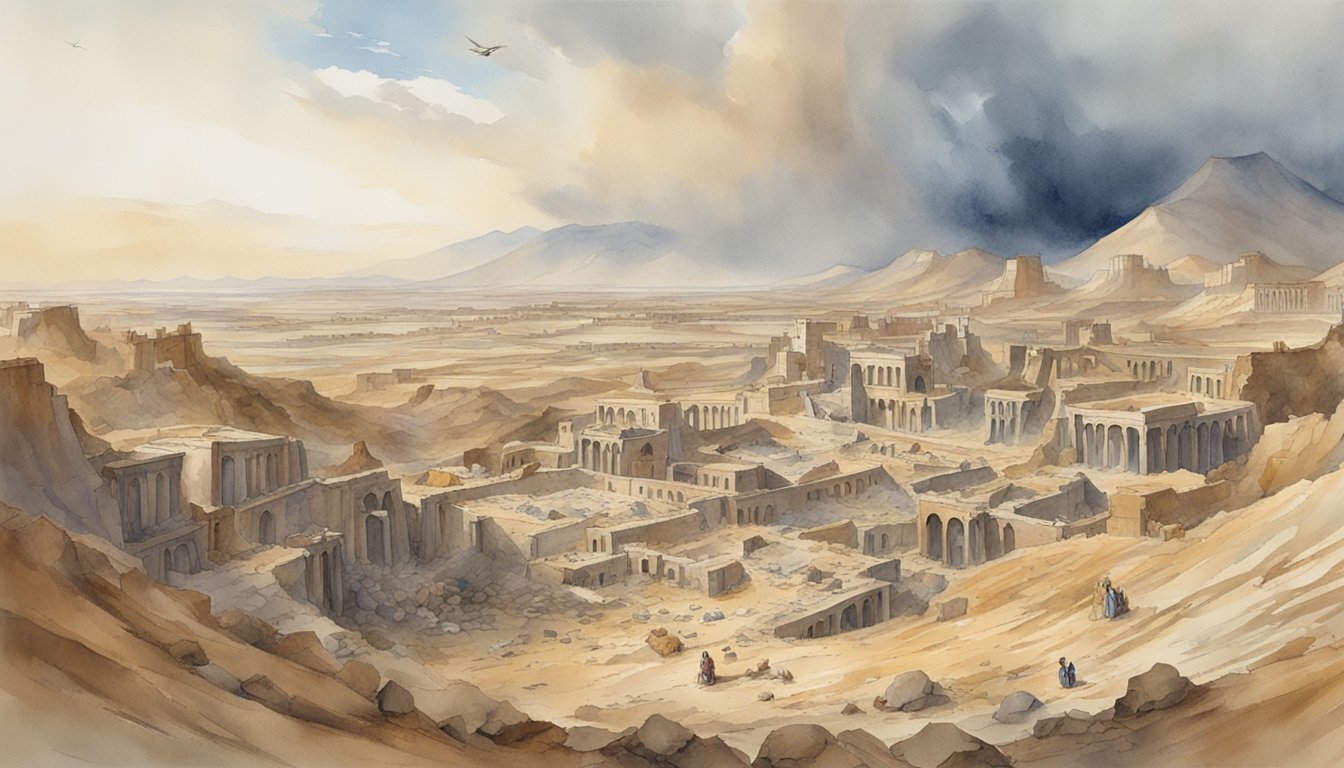Discovery and Archaeological Evidence
The quest to unearth the reality behind the biblical cities of Sodom and Gomorrah has led archaeologists to several promising sites, where extensive evidence points to a significant historical event linked to these ancient narratives.
Tall el-Hammam Excavation
Tall el-Hammam, an archaeological site in the southern Jordan Valley, has been a focal point for researchers examining the history of the Bronze Age in this region. Excavations led by Dr. Steven Collins suggest that the site aligns with the location of the biblical city of Sodom, based on its size and the clues provided within ancient texts. The ongoing dig has uncovered a wealth of artifacts dating back to the Middle Bronze Age, offering a glimpse into the lives of those who would have inhabited the area.
Artifacts and Ruins
Tall el-Hammam has revealed a plethora of artifacts and ruins, such as pottery shards that speak to the daily life of its ancient residents. Furthermore, the city’s strategic position near the Dead Sea, matched with historical records, supports its identification with the story of Sodom. Adjacent sites such as Numeira and Bab edh-Dhra have also been associated with the other “cities of the plain” mentioned in biblical texts, with various ruins corresponding to the era in which Sodom and Gomorrah would have existed.
Geological Analysis
The cause behind the dramatic end of Tall el-Hammam has been a subject of much debate. A recent study published in Nature Scientific Reports details evidence of a high-temperature event likely caused by a cosmic airburst, comparable to a meteoric explosion in the atmosphere. This event would have caused extreme temperatures, potentially flattening the city and leaving behind telltale signs of shocked quartz. This data provides a scientific basis for the dramatic destruction of a city that could very well be the Sodom of biblical fame, contributing to a broader understanding of the historical realities behind these long-standing tales.
Historical Context and Impact

In examining the ancient cities of Sodom and Gomorrah, one encounters a multifaceted narrative that intertwines religious scripture, cultural impact, and scientific inquiry. The compelling story of these cities’ destruction has reverberated through history, influencing various aspects of human thought and scholarship.
Biblical References
According to the Book of Genesis, Sodom and Gomorrah were cities situated on the plain of the Jordan River, notorious for the sinfulness of their inhabitants. Genesis narrates that God destroyed these cities with brimstone and fire, sparing only Lot and his family. The tale of Sodom and Gomorrah serves as a potent example of divine judgment against societal immorality within the Bible.
Cultural Significance
The story of Sodom and Gomorrah has transcended its biblical origins to become a part of cultural and religious discourse, symbolizing the ultimate consequence of sin. References to these cities have appeared in the New Testament and the Hebrew scriptures, illustrating ongoing infamy. Their names alone evoke the notion of destruction tied to moral decay, influencing countless narratives and interpretations across religions.
Scientific Perspectives
Recently, scientists have posited that a catastrophic cosmic event, akin to the Tunguska explosion or a comet’s impact, may explain the sudden ruin of Bronze Age city Tall el-Hammam, potentially corresponding to the biblical Sodom. This theory, supported by evidence of high-temperature damage and high-salinity soil, has sparked an ongoing debate among scholars. Furthermore, the site’s excavation has contributed valuable insights into the understanding of ancient civilizations and their experiences with cosmic and geological events.

